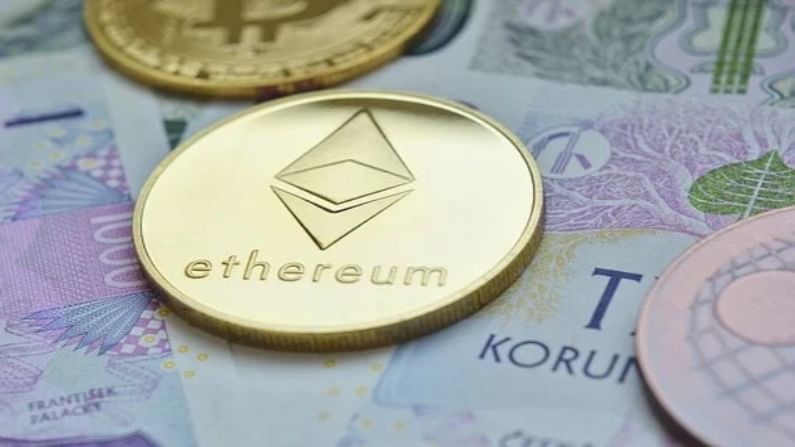Key trends driving growth of CryptoTech: NASSCOM report
The NASSCOM report noted that there will be 500 million Bitcoin wallets by 2025 compared to 75 million Bitcoin wallets in 2021.

In terms of ranking, all the cryptocurrencies remained in the same position in the last 24 hours.
The global crypto industry is expected to cross $1.6Bn in 2021, and $2.3 billion by 2026, according to a NASSCOM report titled ‘Crypto Industry in India’. The report states that there are 7 key trends that are driving the growth of crypto tech.
Here are the key insights from the Nasscom report:
Bitcoin as Digital Gold
- Bitcoin penetration is faster than the Internet. It is estimated that there will be 500 million bitcoin wallets by 2025 compared to 75 million Bitcoin wallets in 2021.
- 1% of Bitcoins held by 26 publicly traded companies.
- 69 large corporates accept Bitcoins as payment as of 2021.
- 15.8% of remitters are already using cryptocurrency for money transfer ($95.96 billion in 2020 digital remittances).
- $2 trillion worth global movement and tracking of goods and services supported by blockchain.
Smart Contracts
- 245 million global smart contracts market by 2024 and growing at 18.1%.
- Of the fifty companies, thirty-two are building on Ethereum or Enterprise Ethereum derived blockchains platforms. Over ten companies are using their own Ethereum blockchain.
- 26,863+ companies are using Enterprise Ethereum derived blockchains for Smart Contract.
- Over 20 countries testing/deploying smart contracts in the public sector.
- Out of 50 Forbes billion-dollar blockchain babies, 32 companies building on Ethereum or Enterprise Ethereum blockchains platforms.
DeFi (Decentralized Finance)
- Decentralized finance (DeFi) is emerging as a tool for smaller businesses in developing markets, particularly for remittances and small loans.
- The transaction banking industry is beginning to see DeFi’s potential to overhaul the inflexibility of present processes.
- Uptake of DeFi in transaction banking could open up new capital opportunities for larger companies and increase liquidity for SMEs.
- Availability of stablecoin pegged to the USD, such as USDC, USDT (Tether), BUSD (Binance) and Dai (Maker), is growing.
- Interoperability protocols, such as the Inter-Blockchain Communication protocol and Popskip, have been released for both public and private blockchains.
Tokenization
- Tokenization is a process by which Primary Account Numbers (PANs) are replaced with surrogate values called tokens. The security of tokens relies predominantly on the infeasibility of determining original PANs knowing only surrogate values.
- 15+ Countries are using Tokenization. Security tokens are taking the world by storm and many progressive legislators and regulators have begun defining the lexicon within their jurisdiction’s laws.
- The transaction banking industry is beginning to see DeFi’s potential to overhaul the inflexibility of
- present processes.
- Major factors driving the growth of the market are the increasing need to stay compliant with regulations, rising demand for cloud-based tokenization solutions and services and increased alignment of customers toward contactless payments etc.
- Contactless cards and digital first credit cards are also expected to fuel the growth of tokenization in North America.
Non-Fungible Tokens
- NFT is short for “Non-Fungible-Token”, and it is essentially a special token with a unique ID that is impossible to replicate.
- NFTs help digital artists to attain ownership of their digital artwork. They can receive more income through NFTs, as they can get royalty each time the NFT is transacted after the initial sale.
- NFT trading was worth $250 million in 2020, a 300% increase from the previous year and 2021 it touched $350 million a 40% growth.
- NFTs have seen application in digital art, trading cards, collectibles, or video games artefacts, digital music, concert tickets, etc. and will soon be used as collateral in decentralized finance.
- Growing Adoption in Gaming Industry – Gaming Industries are coming up with innovative advanced games such as Strategy Role Playing Game, where the user can create a game character and using NFT can get the ownership of created character which later can be put up on sale on various marketplace.
Crypto Capital and 5G boost
- Crypto Capital is fast emerging as an alternate for VC investments with rise in fundraising on Blockchain.
- USD 86 billion in lending on DeFi platforms as of May 2021, up ~650% from $11 billion in October 2021.
- 5G will accelerate decentralized finance use-cases and bolster crypto adoption.
- Funds raised by Framework will support several DeFi tokens and applications as well as centralized projects experimenting on DeFi blockchains and services.
- The massive growth of DeFi applications, most of which run on the Ethereum blockchain, has put the spotlight on digital assets and lifted major cryptocurrencies such as bitcoin and ether to record highs.
CBDCs
- A CBDC is the legal tender issued by a central bank in a digital form. It is the same as a fiat currency and is exchangeable one-to-one with the fiat currency. Only its form is different.
- Central banks, faced with dwindling usage of paper currency, seek to popularize a more acceptable electronic form of currency (like Sweden).
- Jurisdictions with significant physical cash usage seeking to make issuance more efficient (like Denmark, Germany, or Japan or even the US).
- Central banks seek to meet the public’s need for digital currencies, manifested in the increasing use of private virtual currencies, and thereby avoid the more damaging consequences of such private currencies.
- In India, The Reserve Bank of India (RBI) has stated that it will soon begin working towards the “phased implementation” of its own digital currency.
- The first trials of the e-currency in India is likely to commence by the end of 2021.
Published: September 25, 2021, 14:38 IST